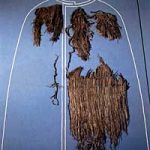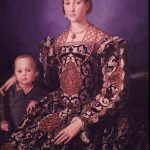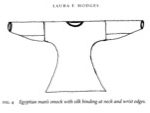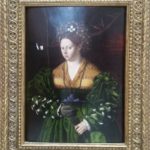
Portfolio
Fashion of the Paleolithic/Neolithic Periods Paleolithic peoples would have worn and worked with materials that required very little assembly, preparation and maintenance due to a comparatively low intellect, nomadism, knowledge of construction, tools and I’m sure a number of other…
The Significance of Costume Kinship
From the time ancient civilizations began to appear in the “cradle of life” they experienced an increase in interaction with each other by establishing trade and travel. Through trade and travel, societies became more integrated and intertwined causing geographical and…

Allegiance to the Spanish imperial court
When Emperor Charles V dominated Europe after 1520 a widespread adoption of Hispanic attire soon followed. Some saw the dress alla spagnola as fashionable, others agreed utilizing it as a display of allegiance to the empire, while many, particularly Florentines,…

Behind the Scene: The Costs, Collaboration and Commitment of Clothing Construction
This is Eleonora di Toledo, wife of the famous Cosimo I de’ Medici (Grand Duke of Tuscany) and her son Giovanni (Agnolo Bronzino, Eleonora of Toledo with Son Giovanni, c. 1544-5, http://library.artstor.org.prox.miracosta.edu/library/iv2.html?parent=true#). She was a member of one of the…

Smocks in History
A smock is an undergarment that is worn between the skin and the outer garment (s) and, “over the centuries and across geographical and cultural terrain, smock, chemise, or shirt styles maintained basic similarities, while varying from excessively plain to…

Renaissance Portraiture from the Timken
The Portrait of a Lady in a Green Dress painted by Bartolomeo Veneto sometime between 1502-1531 shows the wide, high-waisted voluminous gown complete with contrasting colors and slashed sleeves which expose the blackwork embroidered chemise or smock underneath that are…
Beads & Crowns: Details Which Further Distinguish Upper Egypt From Lower Egypt
The specific beads that are often found on the beaded apron and beaded hip drape distinguish Upper Egyptian pharaohs from Lower Egyptian pharaohs. Upper Egyptian royalty typically donned the lotus flower while Lower Egyptian royalty sported the papyrus. When both…

Recent Comments